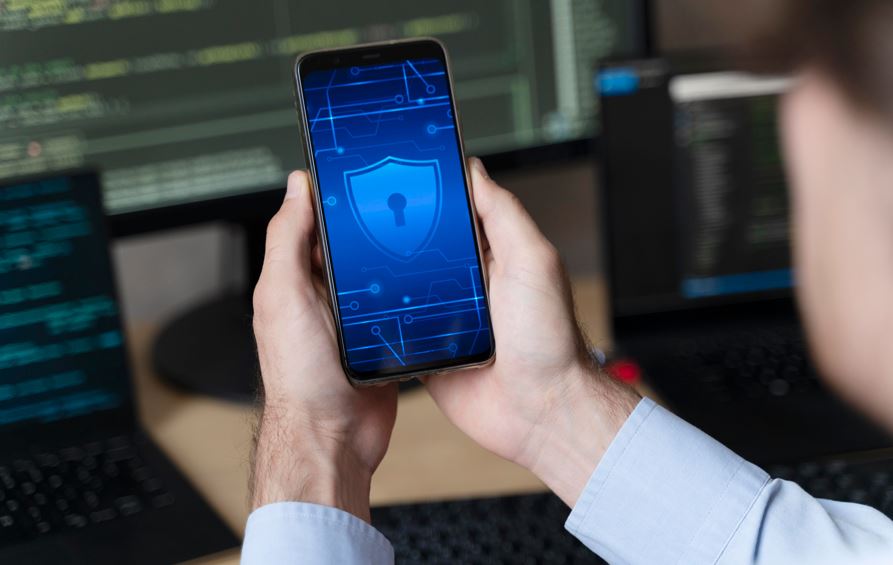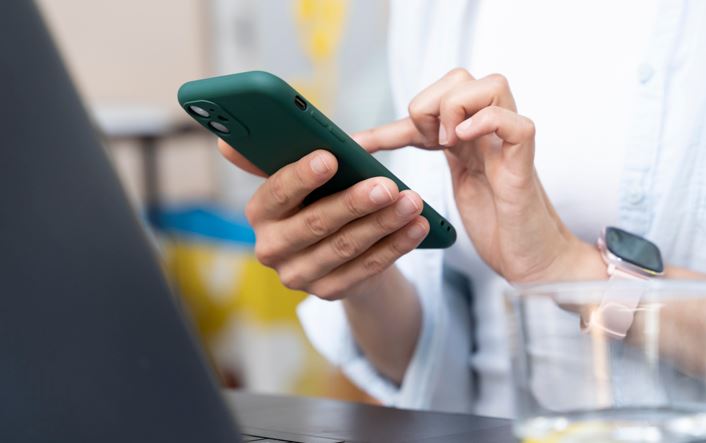How to secure your smartphone from hackers
14th July 2024
Diane Marley
In the current digital era, safeguarding the security of one's smartphone against potential hackers is of paramount importance. This article aims to equip individuals with essential knowledge on this subject, ranging from recognizing common techniques employed by cybercriminals to implementing robust security measures including the utilization of strong passwords and biometric authentication.
Furthermore, the discourse will cover various types of attacks and vulnerabilities that users should remain cognizant of. Additionally, suggested security enhancements such as the activation of remote wiping functionalities and regular data backups will be addressed.
It is crucial to remain abreast of the strategies for securing one's smartphone as well as understanding the appropriate actions to take should one's device fall victim to hacking.
Understanding Smartphone Security
Having a comprehensive understanding of Smartphone Security is imperative in the current digital era, where mobile devices store substantial amounts of sensitive personal data. Securing your smartphone involves the implementation of stringent security protocols to mitigate cyber threats and prevent unauthorized access.
Importance of Protecting Your Device
Safeguarding one's smartphone is imperative to protect personal data and privacy from potential cyber threats. By ensuring the security of the device, unauthorized access can be prevented, and the confidentiality of sensitive information can be maintained.
In today's digital era, smartphones have evolved into essential tools for communication, entertainment, and productivity, containing a wealth of personal information. These devices are attractive targets for malicious individuals aiming to exploit vulnerabilities for nefarious purposes.
Common threats such as malware, phishing attacks, and data breaches present substantial risks to privacy and security. By proactively implementing measures such as utilizing strong passwords, activating encryption protocols, and installing security applications, individuals can significantly diminish the likelihood of succumbing to such threats. These actions serve to safeguard valuable data and prevent it from falling into unauthorized hands.
Common Methods Used by Hackers
Cyber attackers utilize a range of techniques to breach smartphone security and unlawfully access confidential data. It is imperative to comprehend the typical strategies employed by malicious entities to enhance the protection of your device against potential cyber threats.
Types of Attacks and Vulnerabilities
Smartphones are susceptible to a variety of cyber threats, including malware infections, phishing schemes, and data breaches. It is imperative to comprehend these common vulnerabilities to establish effective security protocols for safeguarding your device.
Malware is a type of malicious software specifically engineered to compromise devices by infiltrating their systems and extracting sensitive data. Phishing attacks involve deceiving users into sharing personal information through deceptive emails or messages. Exploiting vulnerabilities in smartphone operating systems can lead to unauthorized access to your device.
Encryption plays a critical role in protecting data from cyber threats, as it converts information into a secure code that can only be deciphered by authorized parties. The implementation of robust security measures, such as two-factor authentication and regular software updates, is essential in combatting cybersecurity risks.
Steps to Secure Your Smartphone
Ensuring the security of your smartphone necessitates the implementation of a series of proactive measures aimed at enhancing device security and safeguarding your data from cyber threats. By adhering to these fundamental steps, you can effectively protect your personal information.
Implementing Strong Passwords and Biometric Authentication
The implementation of robust authentication methods, such as strong passwords and biometric authentication on smartphones, is essential to prevent unauthorized access and bolster device security. By establishing stringent authentication protocols, it becomes possible to restrict access to authorized users only, thereby safeguarding both the device and its sensitive data.
Strong passwords act as the primary defense mechanism against unauthorized intrusion attempts by malicious actors seeking to compromise the security of the device. These passwords should be complex, incorporating a mix of letters, numbers, and symbols, while avoiding easily guessable information like birthdates or common phrases.
Biometric authentication offers an additional layer of security through the utilization of unique biological characteristics such as fingerprints or facial recognition. To heighten security measures, it is advisable to activate features like two-factor authentication whenever possible and regularly update passwords to preempt potential security vulnerabilities.
By emphasizing the importance of strong passwords and biometric authentication, individuals can significantly enhance the safeguarding of their personal data and bolster the overall security posture of their devices.
Updating Software and Apps Regularly
It is imperative to regularly update the software and applications on your smartphone to address security vulnerabilities and ensure the implementation of the latest security patches. Remaining up-to-date with these updates is crucial as it helps in mitigating the risk of exploitation by cyber threats.
These updates are instrumental in protecting your personal information and data from unauthorized access. Given that cyber attackers are continuously refining their tactics, it is essential to have security measures that are current and effective.
Failure to install software updates can leave your device vulnerable to malware, viruses, and other harmful activities. Timely updates not only improve the performance and functionality of your smartphone but also contribute to a smoother user experience. Proactively updating your software is a proactive measure in upholding the overall security and integrity of your device.
Using Secure Networks and Avoiding Suspicious Links
It is imperative to connect to secure networks and abstain from engaging with dubious links in order to safeguard one's smartphone from cyber attacks and potential data breaches. By exercising prudence when accessing online resources, individuals can effectively reduce the likelihood of compromising the security of their devices.
Furthermore, in conjunction with prioritizing network security, smartphone users should also emphasize the cultivation of secure browsing practices. One method to enhance both privacy and security is through the utilization of virtual private networks (VPNs) when connecting to public Wi-Fi networks. VPNs establish a secure encrypted connection, thereby safeguarding one's data from potential eavesdropping and cyber threats.
Ahead of clicking on any URLs, it is imperative to verify their legitimacy, as phishing links can direct individuals to malicious websites designed to illicitly obtain personal information. Through educating oneself about prevalent cyber threats and implementing robust password protocols, individuals can fortify their defenses against digital intrusions.
Additional Security Measures
In conjunction with foundational security protocols, the integration of supplementary security measures on a smartphone can augment data protection and resilience against cyber threats. Through the incorporation of these additional safeguards, one can effectively strengthen the security posture of their device.
Enabling Remote Wiping and Backing Up Data
Implementing remote wiping and establishing regular data backups are crucial measures to safeguard your smartphone in the event of loss or theft. By remotely wiping sensitive data and maintaining secure backups, unauthorized access to your information can be prevented.
To enable remote wiping on your smartphone, it is imperative to first verify that the feature is activated within your device settings. Typically, smartphones offer this functionality in the security or privacy settings section, enabling users to remotely erase all data in the case of a lost or stolen device.
Furthermore, configuring automatic data backups is of equal importance. Utilizing cloud services such as Google Drive or iCloud allows for the routine backup of essential files and documents. These practices not only protect personal information but also offer reassurance in the face of unforeseen events.
What to Do If Your Smartphone is Hacked
Realizing that your smartphone has been compromised by a hack can be a cause for concern. However, it is imperative to act promptly to minimize the effects of the breach. By adhering to prescribed procedures, you can effectively respond to the security breach and thwart any additional unauthorized access to your device.
Steps to Take Immediately
If there is suspecting a smartphone hack, swift action is imperative to safeguard one's data and privacy. Adherence to specific protocols promptly can effectively contain the breach and impede any further unauthorized access to the device.
The primary critical measure involves disconnecting the device from all networks, encompassing Wi-Fi and mobile data, to forestall the hacker from perpetuating access to confidential information.
Subsequently, it is advisable to modify all passwords linked to the device, including those for email, social media, and banking accounts. This proactive step ensures that the hacker is unable to exploit compromised data for subsequent attacks.
In cases where uncertainty prevails regarding the appropriate course of action, enlisting professional aid from a cybersecurity expert can prove beneficial. Such expertise can aid in determining the scope of the breach and executing requisite security protocols to fortify the device and its data integrity.















